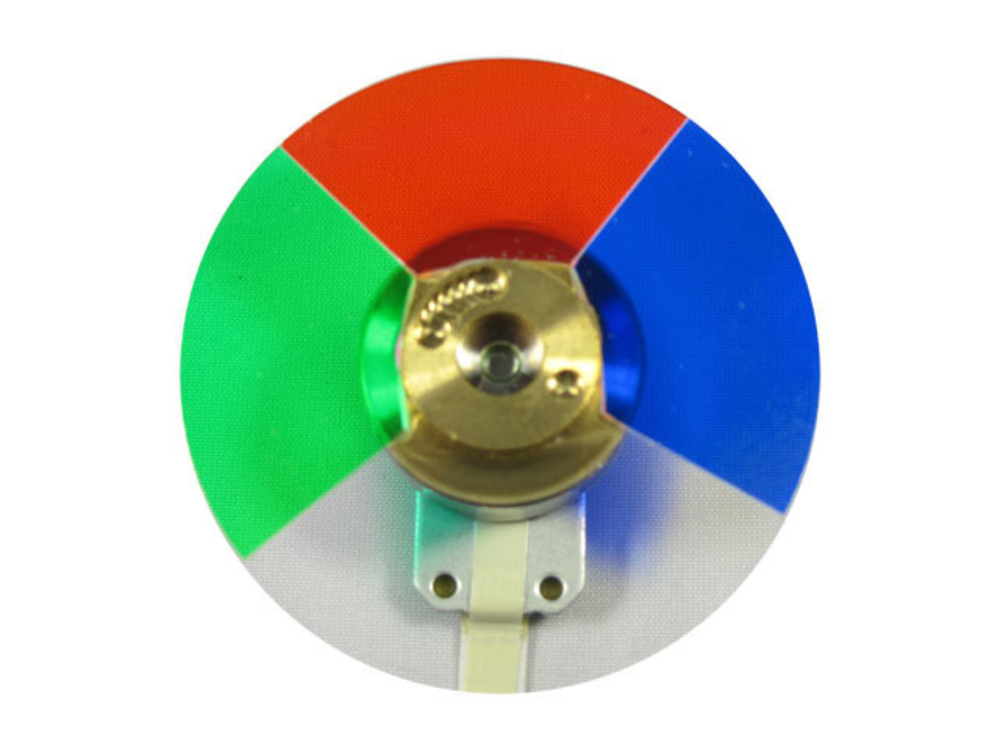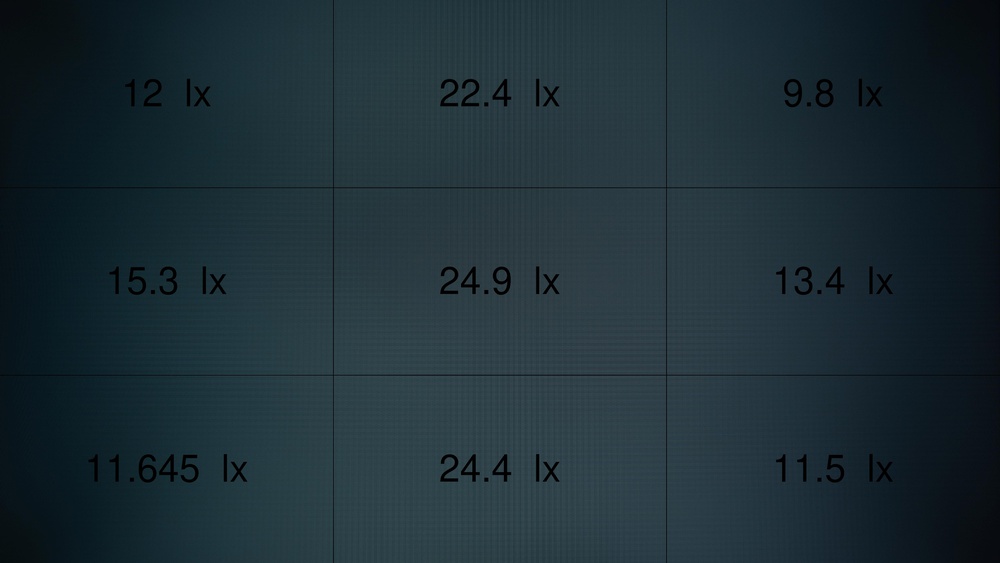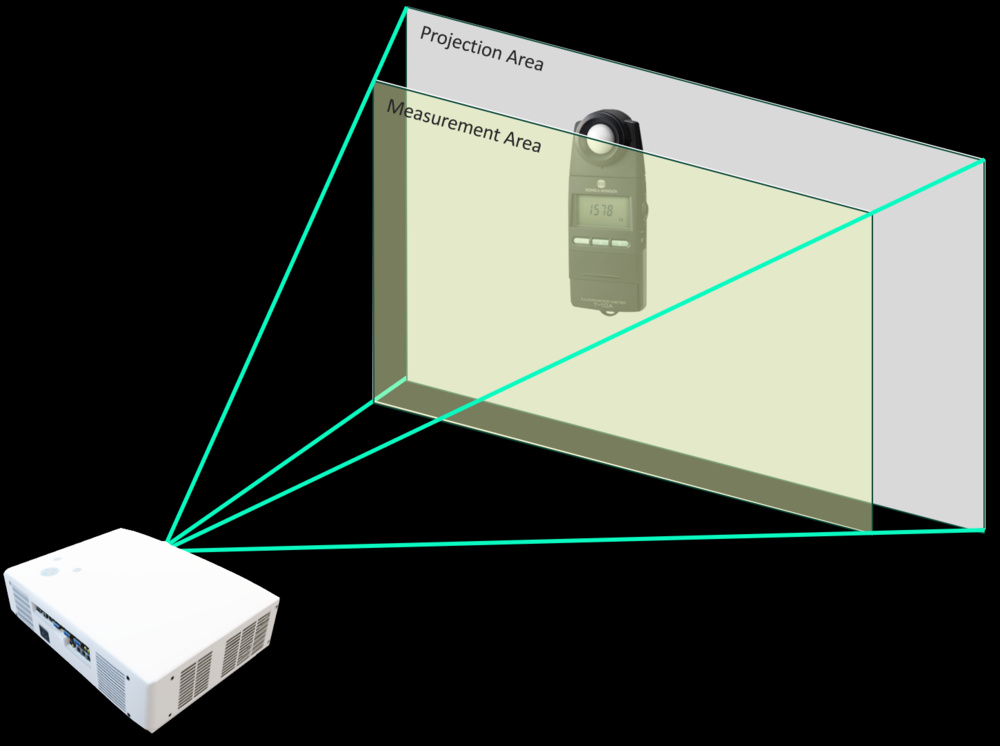- 40.0%White Light Output
- 40.0%Color Light Output
- 20.0%Brightness Uniformity
Brightness refers to the maximum luminance of a projector. A higher brightness means the projector can make the picture look brighter, which can help with visibility in a bright room. Although projectors are traditionally used in completely dark home theater rooms, not everyone has the space or setup for this. More and more people are trying to use their projectors in a brighter living room, so it's important to get a projector that's bright enough for the ambient lighting conditions in your room.
For this test, we measure the brightness of pure white and colors, and we test how uniform the brightness is. Unlike TVs and monitors, which usually measure brightness in cd/m² or 'nits,' projector brightness is typically measured in lumens.
Test results
When It Matters
Brightness is one of the most important aspects of any display technology, directly contributing to the overall picture quality. With projectors, it's even more important to know how bright your new projector can get to ensure it matches your viewing environment. If you have ambient light in the room where you plan to install your new projector, a high peak brightness is necessary to overcome that light. If it's too dim, you won't see a clear image of the movie or show you're trying to watch. High peak brightness is also important if you plan to watch HDR content. Otherwise, bright highlights won't stand out or look the way the content creator intended.
Our Tests
Our testing for brightness is fairly straightforward. We use our calibrated SDR settings for the projector while setting the brightness setting to max. We do our testing in a completely dark, light-controlled room with a 100" Steward StudioTek 100 projector screen with neutral gain (1.0). We connect the projector to a computer, which we then use to display various patterns depending on the specific brightness test we're running. We use a Konica Minolta T-10A illuminance meter to measure the luminance of each section of the screen.
White Light Output
The main component of our brightness testing is the White Light Output test. The primary goal of this test is to determine how much light a projector emits. The two examples below show the difference between a projector with low brightness (left) and one with high brightness (right). The VANKYO Leisure 3 is incredibly dim—so dim that it's hard to even tell that the projected image is supposed to be white. The Epson Home Cinema 3800 looks much better overall and is bright enough to overcome some ambient light.
To run the test, we set up the projector in our completely black, light-controlled room. We connect the projector to a computer, which we then use to display a full white screen. We measure the luminance of each section using a Konica Minolta T-10A illuminance meter. We then take a picture of the screen, and an overlay is added to show the brightness of each section.
These nine measurements are great, but they represent spot readings over nine points, not the total light output from the projector. To arrive at a final measurement, we take the average of the nine boxes to determine the average light output and multiply it by the screen area to arrive at the final white light output number in lumens. As part of this, we also need to apply a geometric correction to account for the measuring distance between the T-10A illuminance meter and the screen.
Color Light Output
 An example of a DLP color wheel (source: projectorjunkies.com)
An example of a DLP color wheel (source: projectorjunkies.com)The peak brightness measurements with white slides are great, but nobody watches white slides, so how does this represent real usage? That's where the Color Light Output test comes into play. Instead of measuring pure white, this test aims to see how bright colors are.
In a perfect world, colors would be just as bright as pure white, but this isn't always the case, depending on the projector technology used. Regardless of the light source, three-chip projectors use separate channels for red, green, and blue, so for those projectors, white is simply the three channels combined, and pure white brightness is the same as the color output.
Single-chip DLP projectors, however, usually use color wheels like the one shown here to display each channel. Color wheels used to just consist of separate red, green, and blue channels that were used to make any color as well as pure white.
Manufacturers started adding white sections to some of these wheels, though, as a way to increase the overall peak brightness and deliver brighter whites. Projectors with a white section on the color wheel don't combine red, green, and blue to produce pure white; white is usually significantly brighter than the peak color output, as it's just the light from the lamp shining straight through. This results in dimmer colors, as colors on these projectors are produced by shining light through an imperfect color filter. This effect is so significant that on some projectors, colors are up to 60% dimmer than pure white.



To test the color light output, we use the same setup as the white output, but instead of measuring pure white, we use the three different test images shown above. We measure the brightness of all nine rectangles in all three slides for a total of 27 measurements. We then add up the brightness measurements from each rectangle across the three slides and take the average.
Brightness Uniformity
Taking the white light output numbers as a starting point, there's another interesting test we can run: brightness uniformity. As the name suggests, this test looks at the measurements we took in the previous test to see how uniform the brightness is. After all, we don't want a brighter screen in the center than on the edges. Looking at the same two projectors from above, the VANKYO Leisure 3 has very poor brightness uniformity, and you can clearly see it as the sides of the projected image are significantly darker than the center. On the other hand, the Epson Home Cinema 3800 is very uniform. There's some variation in lux around the corners, but it's not noticeable.
So, how do we actually calculate the uniformity? Turns out, it's really simple. We take the average of the four corner boxes and divide that number by the center. There are multiple ways we could do this, and different manufacturers use different methods to arrive at their own numbers, but this is one of the most commonly used methods.
Screen Brightness
While running the White Light Output test, we also use a Konica Minolta LS-100 luminance meter to measure the brightness of each square in cd/m², or nits. We take the average of those measurements and add it to the review. We do this simple test to give you a rough idea of how bright a projector is relative to a TV. When comparing these numbers, though, it's important to remember that the perceived brightness of a display, regardless of type, is relative to the size of the screen. A 100" projector screen at 200 nits will look brighter than a 55" TV of the same brightness at the same viewing distance.
Geometric Correction
After we tested the first 20 projectors, we discovered a slight flaw in how we were converting the measurements in lux to the final lumens measurement. This is because the Konica Minolta T-10A illuminance meter we use to measure the screen brightness takes its measurements at an offset of about 2.75 cm from the screen instead of reading it directly at the screen. This means that the area we're measuring is actually smaller than the final projected image.
The problem with this is that at a constant lumen output, a large dim area has the same ANSI lumen as a smaller, brighter area. In short, this means that since we're taking our measurements offset from the screen, the measured lux is brighter than it would be if we were measuring on the surface of our screen. If we multiply this inflated value by our screen size (which is always larger than the "virtual" screen we measure), we overstate our lumen readings. The overall impact of this aberration varies depending on the throw ratio, so for some projectors, it's minor, but for ultra-short throw projectors (UST), it can be as much as 10%.
Conclusion
Brightness refers to the maximum luminance of a projector, and it's an important consideration when choosing a new projector. Finding a projector that's bright enough for your viewing environment is important. Brightness is also an important part of picture quality, especially when watching HDR content.


